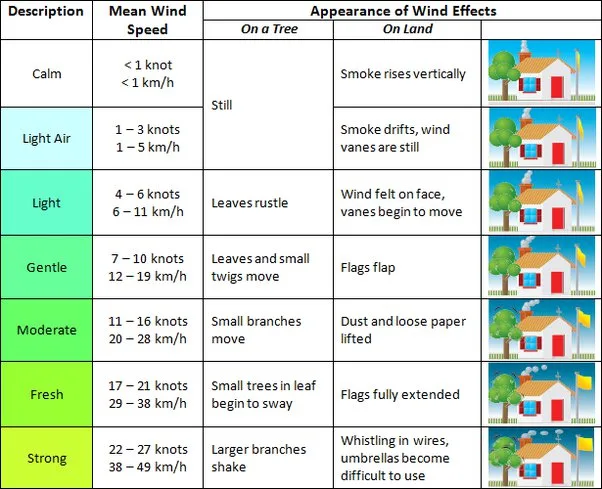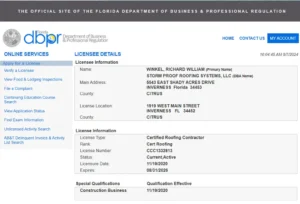Storms have the power to wreak havoc on our homes, causing extensive damage and leaving us vulnerable to the elements. As homeowners, it is crucial that we understand the impact of storm categories on our roofs in order to protect our properties and ensure our safety during severe weather events. By familiarizing ourselves with storm categories and their classification systems, we can make informed decisions about roofing materials, design, and maintenance.
The Importance of Understanding Storm Categories
When it comes to storms, knowledge is power. Understanding storm categories empowers homeowners with essential information about the potential damage they can expect during different weather events.
By comprehending how these categories correlate with wind speeds and storm surge levels, individuals can take proactive measures to safeguard their roofs against destruction. Roofs are not only vital components of a home’s structural integrity but also provide protection for its inhabitants.
A compromised roof can result in substantial water damage, mold growth, compromised insulation, and even structural collapse. Therefore, comprehending storm categories becomes even more critical as they serve as a benchmark for evaluating the vulnerability of different roofing materials and designs.
A Brief Overview of Storm Categories
In order to evaluate the potential impact on roofs accurately, storms are categorized based on various classification systems such as the Saffir-Simpson Hurricane Wind Scale for hurricanes or tropical cyclones. This distinguished scale provides a clear understanding of a storm’s strength by categorizing them into five distinct levels: Category 1 through Category 5. Category 1: These storms have sustained winds ranging from 74-95 mph (119-153 km/h).
While they may cause some damage to roofs primarily through fallen tree limbs or loose debris impact, well-built structures generally withstand these winds without significant issues. Category 2: With sustained winds between 96-110 mph (154-177 km/h), Category 2 storms pose a higher risk to roofs.
They can cause more extensive damage, including potential roof leaks, shingle loss, and damage to gutters and soffits. Homeowners must be vigilant in preparing their roofs for these storms.
Category 3: Category 3 storms pack a punch with sustained winds of 111-129 mph (178-208 km/h). These storms can cause severe damage to roofs, leading to roof structural failure, significant water intrusion, and the potential for roofs being torn off entirely.
Precautionary measures are necessary to protect against such destructive forces. Stay tuned for the next section as we delve deeper into understanding storm categories and their implications for roofing materials and design.
Understanding Storm Categories
The Saffir-Simpson Hurricane Wind Scale: Decoding the Power of Storms
When it comes to comprehending the intensity and potential destruction caused by hurricanes, the Saffir-Simpson Hurricane Wind Scale serves as a vital tool. This widely recognized classification system provides a detailed breakdown of each storm category, ranging from Category 1 to Category 5. By understanding this scale, homeowners can gain valuable insights into the expected wind speeds, potential damage, and storm surge associated with each category.
Category 1: Mild Yet Menacing
While Category 1 hurricanes may be considered relatively mild compared to their more formidable counterparts, they still pose a significant threat to homes and infrastructure. These storms are characterized by sustained winds ranging between 74 and 95 miles per hour (119-153 km/h).
At this level, well-constructed roofs typically sustain minimal damage, with losses primarily limited to unanchored mobile homes and shrubbery. Storm surge heights range between 4-5 feet (1.2-1.5 meters), leading to localized flooding in low-lying areas.
Category 2: Increasing Fury
As we ascend the Saffir-Simpson scale, Category 2 hurricanes demonstrate escalating power and destructive potential. With sustained winds raging between 96 and 110 miles per hour (154-177 km/h), these storms can inflict significant damage on roofs and structures not built with adequate resilience measures.
Mobile homes are particularly vulnerable during these storms, often suffering severe structural failure due to high wind forces. Coastal areas experience storm surge heights ranging from approximately six to eight feet (1.8-2.4 meters), leading to widespread flooding that may penetrate further inland.
Category 3: The Menace Intensifies
Once a storm reaches Category 3 on the Saffir-Simpson scale, it transitions into a major hurricane, possessing immense destructive capabilities. Sustained winds between 111 and 129 miles per hour (178-208 km/h) define these storms. Roofs of well-built homes often suffer significant damage, with gable and flat roofs being particularly vulnerable to wind uplift forces.
Mobile homes are at extreme risk of destruction, while larger structures can experience significant roof and wall failures. Storm surge heights during Category 3 hurricanes range from nine to twelve feet (2.7-3.6 meters), leading to extensive coastal flooding and potential inundation of low-lying areas.
Category 4: The Unforgiving Force
As we approach the upper end of the scale, Category 4 hurricanes become increasingly formidable in their destructive power. With sustained winds ranging between 130 and 156 miles per hour (209-251 km/h), these storms can cause severe roof damage to even well-built homes, often resulting in partial or complete structural failure.
Large trees may be uprooted or snapped, while mobile homes face near-certain destruction due to the high wind forces exerted upon them. Storm surge heights during Category 4 hurricanes typically reach between thirteen and eighteen feet (4-5.5 meters), causing catastrophic flooding along coastlines and posing a substantial danger to inland areas.
Category 5: The Ultimate Fury
At the top of the Saffir-Simpson scale lies Category 5 hurricanes – nature’s most cataclysmic forces that leave a trail of utter devastation in their wake. These monstrous storms showcase sustained winds exceeding 157 miles per hour (252 km/h) or higher.
Homes experience severe roof damage or total collapse under these conditions, with even large commercial buildings sustaining significant structural failures. Storm surge heights during Category 5 hurricanes can reach a staggering nineteen feet (5.8 meters) or more, leading to widespread and life-threatening coastal flooding that penetrates deep inland.
Understanding the Saffir-Simpson Hurricane Wind Scale provides homeowners with vital knowledge about the potential impact of storms on their roofs. By recognizing the distinct characteristics of each category, individuals can make informed decisions regarding preparation, evacuation plans, and fortifying their homes against impending storms.
Roofing Materials and Their Resilience to Storms
An Overview of Common Roofing Materials
When it comes to protecting your home from the fury of storms, choosing the right roofing material is crucial. Three commonly used materials are asphalt shingles, metal, and tile. Each material possesses unique characteristics that influence its durability and resistance in the face of severe weather conditions.
Asphalt Shingles: Pros and Cons in Relation to Storm Impact
Asphalt shingles have long been a popular choice for homeowners due to their affordability and versatility. In terms of storm impact, they offer certain advantages but also come with limitations.
Asphalt shingles are generally considered durable against moderate winds and light debris impact. However, their resilience declines as wind speeds increase beyond 70-80 mph. Strong gusts can cause them to lift or even tear off completely, leaving your roof vulnerable to water intrusion.
On the other hand, asphalt shingles can provide some level of protection against heavy rains when properly installed with an effective underlayment system. They also offer a wide range of design options, allowing homeowners to match their aesthetic preferences without compromising on functionality or budget.
Metal Roofs: Advantages in Withstanding High Winds and Impacts from Debris
Metal roofs have become increasingly popular among homeowners seeking superior storm resilience. With their exceptional durability and strength, metal roofs offer significant advantages when it comes to withstanding high winds and impacts from flying debris. Metal roofing panels are typically interlocked, creating a robust barrier against strong winds that would otherwise uplift or damage other materials such as asphalt shingles or tiles.
Additionally, metal roofs have an advantage in regions prone to wildfires because they are non-combustible. One noteworthy benefit of metal roofs is their ability to shed water quickly due to their smooth surface.
This reduces the risk of water leakage and potential damage caused by heavy rainfall during storms. While they may be initially more expensive than other materials, the long-term savings on repairs, durability, and energy efficiency make metal roofs a worthy investment for storm-prone areas.
Tile Roofs: Resilience Against Wind but Vulnerability to Heavy Impacts
Tile roofs have a timeless charm that can enhance the aesthetic appeal of any home. They are known for their remarkable resilience against strong winds due to their weight and interlocking design.
This makes them an appealing choice in regions with frequent hurricanes or tropical storms. However, it’s important to acknowledge that tile roofs have a vulnerability when it comes to heavy impacts from debris, such as falling tree limbs or large hailstones.
Unlike asphalt shingles or metal roofs, tiles may crack or break under such forceful impacts, potentially leading to water infiltration and subsequent damage. Despite this vulnerability, tile roofs remain a popular choice because they offer excellent insulation properties and have a longer lifespan compared to other materials.
Additionally, regular maintenance and periodic inspections can help identify any damaged tiles that need replacement before they compromise the roof’s integrity. Understanding the durability and resistance of roofing materials is essential in safeguarding your home against storm-related risks.
Asphalt shingles provide affordability but have limitations regarding high winds. Metal roofs excel in withstanding severe weather conditions but come at a higher initial cost.
Tile roofs showcase impressive wind resistance but demand caution when it comes to potential heavy impacts from debris. By carefully considering your local climate and specific storm risks, you can select the most suitable roofing material that will not only protect your property but also provide peace of mind during turbulent weather seasons.
The Role of Roof Design in Storm Resilience
Importance of Proper Roof Design for Storm-Prone Areas
When it comes to safeguarding your home against the wrath of storms, an often overlooked yet crucial factor is the design of your roof. In storm-prone areas, where hurricanes and strong wind events are common, a well-designed roof can make a significant difference in protecting your property.
Proper roof design takes into account various factors like wind uplift, impact resistance, and overall structural integrity. It not only enhances the resilience of your roof but also minimizes potential damage to other parts of your home.
Pitched Roofs vs Flat Roofs: Which Is More Resistant to Storms?
The debate between pitched roofs and flat roofs regarding storm resistance has long been a topic of discussion among homeowners and construction professionals. While both types have their advantages, pitched roofs tend to be more resilient when it comes to withstanding storms. The sloping nature of pitched roofs allows wind to flow more smoothly over the surface, reducing the chances of uplift or damage caused by direct impact from debris.
The steep incline also facilitates better water runoff during heavy downpours, minimizing the risk of leaks or water damage within the structure. On the other hand, flat roofs can still be designed to withstand storms effectively with adequate reinforcing measures.
Reinforced membranes and robust waterproofing systems combined with regular maintenance can enhance their resilience against harsh weather conditions. However, it’s important to note that flat roofs may have higher vulnerability when it comes to ponding water or heavy snow loads during intense storms.
Impact-Resistant Features such as Hurricane Clips, Straps
To fortify your roof’s ability to endure storms, incorporating impact-resistant features becomes imperative. These features play a pivotal role in strengthening connections between different components of your roof structure and are particularly effective in high-wind areas.
Hurricane clips and straps are examples of such features, designed to secure the roof trusses or rafters firmly to the walls of your house. By providing additional support, they minimize the chances of uplift during storms and protect against structural failure.
Additionally, other impactful measures can include using impact-resistant roofing materials like metal shingles or tiles, installing storm-resistant fasteners, and reinforcing vulnerable areas such as eaves and gable ends. These features not only enhance your roof’s resilience but also instill homeowners with a greater sense of confidence knowing that their property is better equipped to withstand nature’s fury.
Conclusion
When it comes to protecting your home from storm damage, understanding the impact of storm categories on your roof is vital. Proper roof design can significantly improve its resilience against storms and minimize potential damage to your property. Whether you opt for a pitched or flat roof, it’s crucial to ensure it meets industry standards for wind resistance and incorporates impact-resistant features like hurricane clips and straps.
With careful consideration given to these factors during construction or renovation, homeowners can rest easy knowing that their roofs are well-prepared for whatever challenges nature may pose. Even in the face of storms, taking proactive measures can empower us with a sense of security while marveling at how human ingenuity continues to evolve in harmony with nature’s unpredictable forces.





